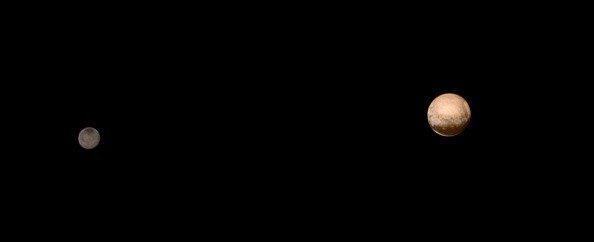NASA's James Webb Space Telescope is now focusing on the former planet, Pluto. But, this time, the international space union will also observe other icy objects in the region of the dwarf planet called Kuiper Belt.

This area is considered the graveyard of the solar system since it is located at the very end. As of the moment, Pluto is still not considered as a normal planet because of its gravitation dominance.
Although this is the case, this space object is still essential since it can help NASA's space experts to further understand the solar system.
NASA James Webb To Study Pluto
According to Space.Com's latest report, Pluto and other heavenly bodies located in the Kuiper Belt can help NASA to better understand the solar system's formative years.

For the past few years, other NASA missions have been able to observe the Kuiper Belt. However, their observations only lasted shortly.
The James Webb Space Telescope is expected to study Pluto and other space objects in the Kuiper Belt for a longer period.
"Using Webb, we will be able to get information about surface chemistry that might be able to give us some clues into why there are these different populations in the Kuiper Belt," said JWST Solar System Observations' interdisciplinary scientist, Heidi Hammel.
The giant space telescope is also expected to observe the so-called centaurs, former Kuiper Belt icy objects that now have altered orbits.
Icy Moons in Kuiper Belt Can Support Life?
Inverse reported that the icy moons located in the Kuiper Belt could actually support life. This detail was claimed by a new study published by the Astronomy journal.
Space researchers in the study claimed that these cold moons were once able to maintain their needed distance to their planets, allowing them to maintain the liquid state of their bodies of water.
These moons include Jupiter's Europa and Saturn's Enceladus. This is another reason why observing the Kuiper Belt and its icy space objects is quite important for NASA.
In other news, the upcoming NASA Artemis Mission moon landing is now expected to happen this coming 2026. Meanwhile, NASA's three new SpaceX contracts have been confirmed.
For more news updates about NASA's JWST and its upcoming space missions, always keep your tabs open here at TechTimes.
Related Article : NASA Artemis I Mission To Send Your Name To the Moon! How To Include Yours in the Space Agency's Flash Drive?
This article is owned by TechTimes
Written by: Griffin Davis
![Apple Watch Series 10 [GPS 42mm]](https://d.techtimes.com/en/full/453899/apple-watch-series-10-gps-42mm.jpg?w=184&h=103&f=9fb3c2ea2db928c663d1d2eadbcb3e52)



